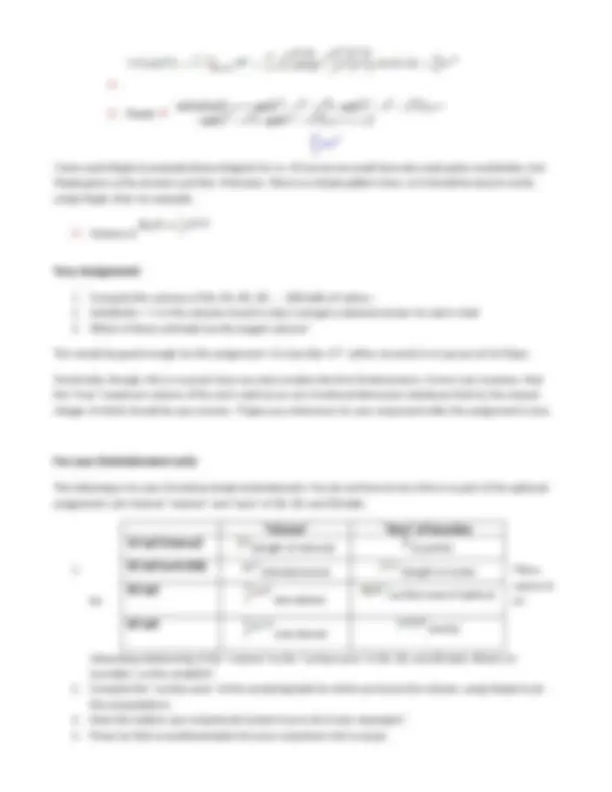



Study with the several resources on Docsity

Earn points by helping other students or get them with a premium plan


Prepare for your exams
Study with the several resources on Docsity

Earn points to download
Earn points by helping other students or get them with a premium plan
Community
Ask the community for help and clear up your study doubts
Discover the best universities in your country according to Docsity users
Free resources
Download our free guides on studying techniques, anxiety management strategies, and thesis advice from Docsity tutors
Material Type: Assignment; Class: Honors Calculus III; Subject: Mathematics; University: Seton Hall University; Term: Unknown 1989;
Typology: Assignments
1 / 2

This page cannot be seen from the preview
Don't miss anything!


We want to investigate in which dimension the unit ball has the largest “volume”. Recall: 1-D “ball”: (which would be the interval ) 2-D “ball”: (also known as the disk of radius r ) 3-D “ball”: (a standard 3D ball of radius r )r 4-D “ball”: … n-D “ball”: Drawing pictures of the 2D and 3D cases to determine the bounds, we know that:
I have used Maple to evaluate these integrals for us. Of course we could have also used polar coordinates, but Maple gives us the answers just fine. Moreover, there is a simple pattern here, so it should be easy to verify, using Maple, that, for example:
The following is for your Christmas-break entertainment. You do not have to turn this in as part of the optional assignment. Let’s look at “volume” and “area” of 1D, 2D, and 3D balls: